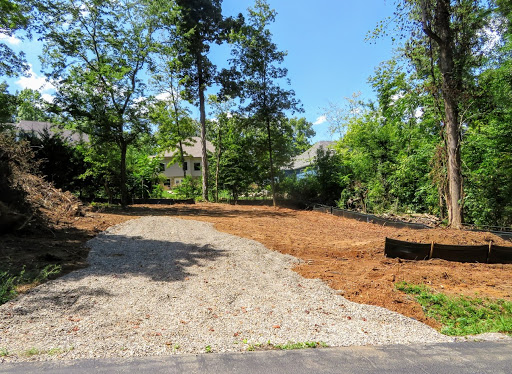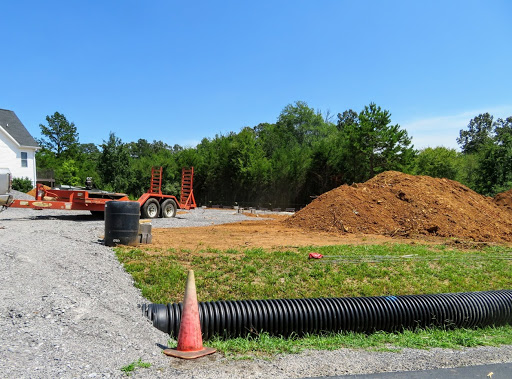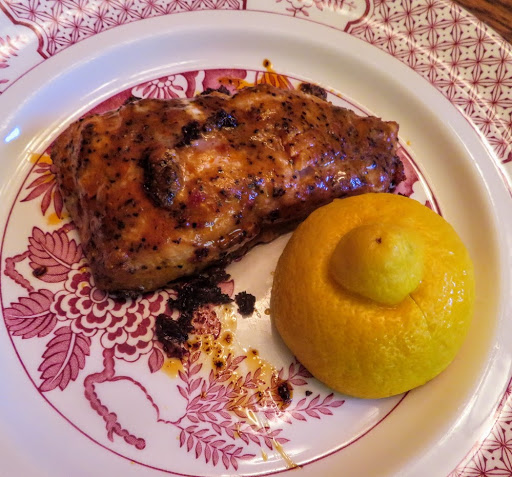There is no doubt what Laurie and I would like to be doing this September…but Covid-19 has changed our normal September routine for the year. We’d love to head out on a road trip and tie the trip to family visits along the way. Colorado and Utah had been our goal but that will have to wait until sometime in 2021.
In lieu
of the real thing, we’ll just have to imagine that we’re spending time with our
family from Omaha. I’m using their smartly
planned early summer family trip to South Dakota for our virtual adventure.
Love this photo of grandsons David III and Emmett Lee in the wilds of South Dakota...but I do have a question for David III. In all the photos from this trip when he's posing with Emmett Lee, why were David's eyes closed!?
Credit
for all of these photos goes to Amy, our daughter-in-law and mother of our 2
terrific grandsons… Kudos to David II for his great trip plan!
I’d used
a few photos from the family trip before, showing the cabin where they stayed
in Custer State Park…and the buffalo that were literally on their
doorstep. In addition to the state park,
they also visited Mount Rushmore. We can
imagine their trip since Laurie and I have spent time in both areas.
Laurie and I love wildlife and Custer State Park is loaded with a variety of critters… The first photo is of a female Rocky Mountain Big Horn Sheep and of course the second picture features a more than cute baby… The sheep in western South Dakota are the easternmost examples of these animals in the wild.
Two
hundred years ago, it is estimated that there were as many as 200,000 big horn
sheep in the western USA. Their numbers
sharply declined until the mid-1930s when the Boy Scouts of America and other
entities started efforts to preserve and expand the herds. At this point, the conservation status of these
attractive wild sheep is listed as being of ‘Least Concern’.
Cute little rodents aren’t they? Prairie dogs are named for their habitat and warning call…which is similar to a dog’s bark. These highly social animals live in large colonies and collections of prairie dog families can span hundreds of acres. Members of a family group inhabit the same territory and they are referred to as ‘coteries’.
Ecologists
consider prairie dogs to be a keystone species.
They are the primary diet for black-footed ferrets, the swift fox,
golden eagle, red tailed hawks, badgers, coyotes and the ferruginous hawk. Golden-mantled ground squirrels, mountain
plovers and burrowing owls rely on prairie dog burrows for nesting areas. Bison, pronghorn and mule deer favor grazing
on the same land used by these rodents. It should be noted that the removal of
prairie dogs causes the spread of brush which prevents the growth of grasses
and damages grazing lands for livestock.
Nevertheless,
prairie dogs are frequently thought of as pests and they’re exterminated from
agricultural lands to prevent crop damage.
Expanding human populations have also reduced their numbers. For many years, it was thought that horses
were often injured by stepping in holes and tunnels dug by prairie dogs. This myth has since been disproven…
Amy also captured this photo of a female mule deer. These deer are indigenous to western North America and they are named for their ears…which are large like those of a mule.
Mule deer
are only found on the western portion of the Great Plains, the Rocky Mountains,
and the American southwest as well as along the West Coast of North
America. White-tail deer, which populate
the Eastern United States can also be found around western South
Dakota…overlapping the range of the mule deer.
The most noticeable differences between white-tailed and mule deer are
ear size, tail color and antler configuration.
Mule deer also tend to be larger.
Sweet! Wait a minute! Isn’t this a baby burro? Yes it is! A small herd of burros have roamed Custer State Park for almost a century. They were originally used as pack animals for visitors to the park. When the trips using burros ended, the working burros (donkeys) were released into the wild and they’ve roamed the park ever since. FYI, a burro is a donkey but it’s referred to as a burro when it’s feral…roaming wild.
The
little herd of burros is commonly seen along the park’s 18-mile wildlife
loop. They are uncommonly friendly and
they’ve learned to beg. They are very
popular with tourists. Given the risks
posed by automobiles, predators and rattlesnakes, the little herd is fairly
stable…at around 15 animals. Perhaps
it’s now at 16 with this latest addition to the family!
This is a Pronghorn, an even-toed hoofed mammal that is indigenous to western and central North America stretching from Canada down into Mexico. It looks like an antelope but instead, it is the only surviving member of its own family ‘Antilocapridae’.
Prior to
the arrival of the Europeans, the pronghorn was very abundant in the region of
the Plains Indians and the area occupied by the indigenous peoples of the
Northwest Plateau. It was hunted as a
principal food source and it also featured prominently in Native American
mythology and oral history.
The
pronghorn is the fastest land mammal in the Western Hemisphere. It can run at 35 miles per hour for 4 miles,
42 miles per hour for 1 mile and 55 miles per hours for a half mile. It is the second fastest land animal in the
world, second only to the African cheetah…but it can sustain high speeds far
longer than cheetahs. Evolutionary
experts have suggested that the pronghorn developed this speed due to an
evolutionary need to escape from now-extinct predators such as the American
Cheetah. The pronghorn’s speed greatly
exceeds any existing North American predators.
How cute! This newly born buffalo/bison calf was being encouraged by his mom to get its footing… The ability to run is critical to its survival in these parts as coyotes and cougars roam the region looking for easy prey.
FYI, other
notable mammals inhabiting Custer State Park include elk, river otters and
mountain goats along with aforementioned mule deer, white deer, Rocky Mountain
sheep, prairie dogs and pronghorns.
Why not scratch against a nice boulder or a big tree? When you weigh more than a ton and you’re as big as this bison bull is, you can scratch on pretty much whatever and wherever you want! He really seemed to be enjoying that nice picnic table…
Custer
State Park is home to as many as 1,500 free roaming bison/American
buffalo. There are so many bison living
here that the park has an annual roundup and auction each September. Up to 1,000 of the bison are rounded up and
several hundred are sold at auction.
This is done to ensure that the remaining rangeland can support the
remaining animals. As many as 10,000
people attend these events…
The
American bison or buffalo once roamed North American in huge herds. They ranged from Alaska to the Gulf of Mexico
and east to the Atlantic seaboard…as far north as New York and as far south as
Georgia. There were so many bison in
North America that the trails or traces they hammered out over the centuries
were followed by both Native Americans and pioneers. A well-known example is the Cumberland Gap
through the Blue Ridge Mountains to upper Kentucky.
In the
late 1700s, there were more than 60,000,000 bison in North America. Through hunting and introduced diseases from
domestic cattle, the herds were decimated.
In roughly 100 years, (1889), the species was down to just 541
animals. Today, thanks to ongoing
preservation efforts there are approximately 31,000 wild bison across the
continent.
Just a
couple more photos…
This is our soon to be 17 year old grandson Emmett Lee. He looks great posing on that boulder with the lake behind him! His big disappointment this year are the limits on sports. He loves basketball, track and football. He’s a junior in high school this fall and he’s still growing…
David III is our oldest grandson. He loves the camera… David will be 20 this December and he just started his sophomore year at New York University in Manhattan. It will be a strange school year with a lot of virtual learning, social distancing and masks. He started out by being quarantined in his room/apartment for 10 days as Nebraska was deemed a high risk state by New York authorities.
That’s
about it for now! We enjoyed seeing the
wildlife at Custer State Park as well as our ‘virtual’ visit with our
grandsons. We hope to be back on the
road by the middle of 2021…
Just
click on any of the photos to enlarge them…
Thanks
for stopping by for a visit!
Stay Safe
and Take Care, Big Daddy Dave


















































